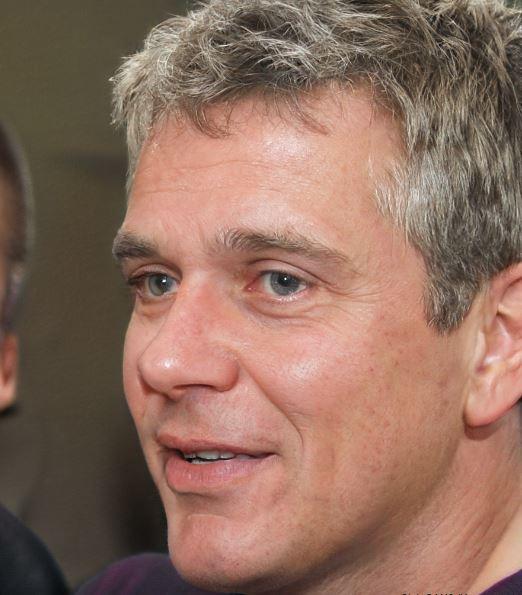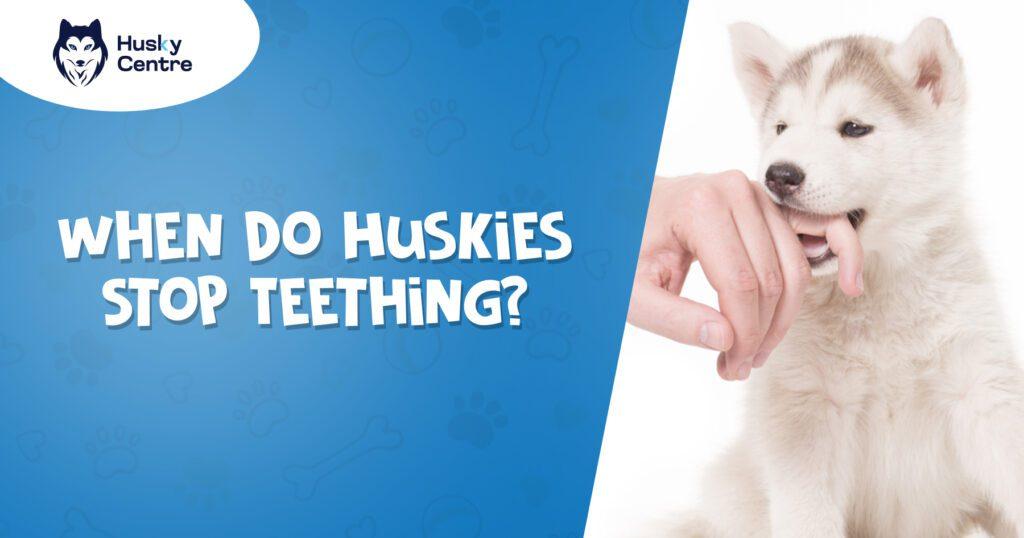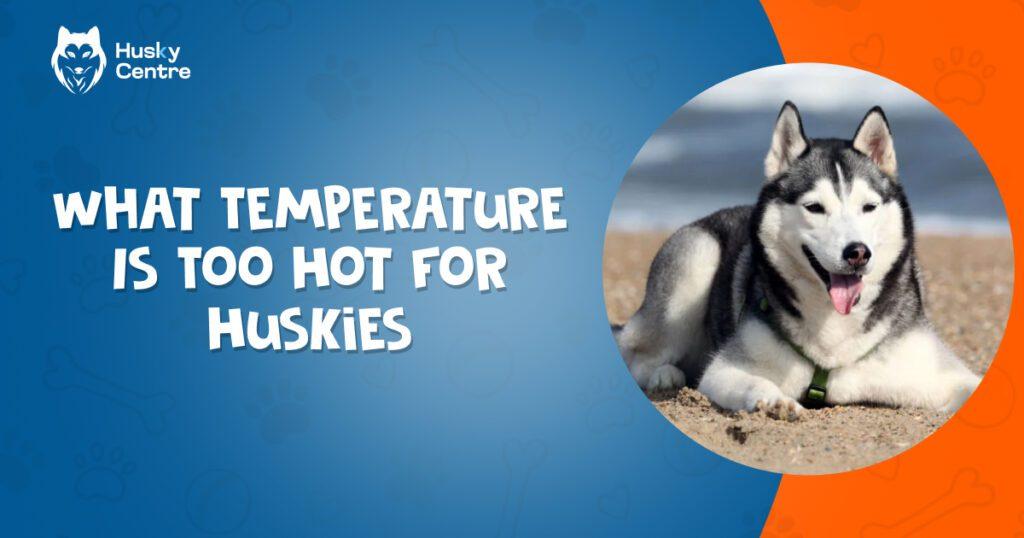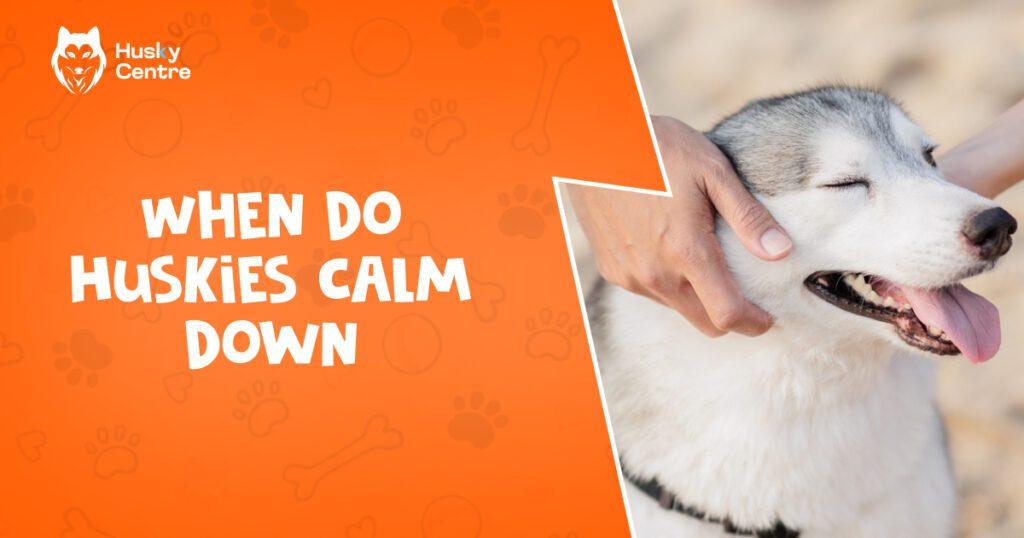Huskies stop teething around 6 to 8 months old. This period can be uncomfortable for both the puppy and the owner.
Teething in Huskies typically starts at about 3 weeks of age and continues until they are 6 to 8 months old. During this time, puppies lose their baby teeth and grow their adult ones. It’s essential to provide appropriate chew toys to soothe their gums and prevent them from chewing on furniture or other household items.
Proper dental care and regular vet check-ups ensure healthy teeth growth. Understanding the teething process helps in managing your Husky’s behavior and maintaining their oral health. Patience and proper care during this phase contribute to a smoother transition for both you and your Husky.
Signs Of Teething In Huskies
Huskies are known for their playful and energetic nature. Teething is a crucial stage in a Husky’s development. Understanding the signs of teething can help you provide the right care and comfort for your furry friend. Recognizing these signs ensures your Husky remains happy and healthy during this period.
Increased Chewing
One of the most noticeable signs of teething in Huskies is increased chewing. Puppies chew on everything to relieve the discomfort in their gums. You may find your Husky gnawing on furniture, shoes, or toys more than usual. Providing chew toys can help alleviate this behavior.
Drooling
Teething often causes excessive drooling in Huskies. You might see more saliva around their mouth or on their bedding. This is a normal reaction to the teething process as their gums become more sensitive.
Swollen Gums
Swollen gums are a common sign of teething. You might notice your Husky’s gums appear redder and puffier than usual. This swelling can cause discomfort, so it’s essential to check their mouth regularly.
Loss Of Appetite
Teething can make eating uncomfortable for Huskies. You might observe a decrease in their appetite during this period. Softening their food or providing special teething treats can encourage them to eat.
Irritability
Huskies can become irritable due to the pain and discomfort associated with teething. They might display unusual behavior, such as whining or being less playful. Offering them extra attention and care can help soothe their irritability.
Bleeding Gums
Minor bleeding from the gums is another sign of teething. You may see small blood spots on their toys or bedding. This is usually nothing to worry about but keep an eye on it to ensure it doesn’t worsen.
Common Signs Of Teething In Huskies
| Sign | Description |
|---|---|
| Increased Chewing | Chewing on various objects to relieve gum discomfort |
| Drooling | Excessive saliva around the mouth and on bedding |
| Swollen Gums | Redder and puffier gums than usual |
| Loss of Appetite | Decreased interest in food due to gum pain |
| Irritability | Unusual behavior such as whining or being less playful |
| Bleeding Gums | Minor bleeding, visible as small blood spots |
When Do Huskies Start Teething?
Huskies are known for their playful and energetic nature. As part of their growth, they go through a teething phase. Teething is an essential development stage for all puppies, including Huskies.
Huskies typically begin teething at around 3 weeks of age. During this period, their baby teeth, also known as deciduous teeth, start to emerge. This phase lasts until they are about 6 to 8 weeks old.
Teething Timeline:
- 3 Weeks: The first set of baby teeth, usually the incisors, starts to show.
- 4-6 Weeks: Canines and premolars follow shortly after.
- 6-8 Weeks: All 28 baby teeth should be in place.
Signs of Teething:
- Excessive chewing on objects
- Increased drooling
- Slightly swollen gums
- Whining or discomfort
Teething can be a challenging phase for both the puppy and the owner. Providing the right teething toys can help alleviate discomfort.
Teething Timeline
Understanding when Huskies stop teething involves knowing their teething timeline. This process includes various stages, from the early signs to the peak chewing phase, and finally to the settling down period. Knowing these stages can help you support your Husky through this challenging time.
Early Signs (3-4 Months)
During the early stages of teething, around 3 to 4 months, you may start noticing some initial signs. Your Husky will begin to experience discomfort as their baby teeth start to make way for adult teeth.
Some common early signs include:
- Excessive drooling
- Chewing on objects
- Red, swollen gums
- Mild irritability
At this stage, providing your Husky with safe chewing toys can help alleviate their discomfort. Avoid giving them hard objects, which can damage their delicate gums.
Here’s a simple table to summarize the early signs:
| Age (Months) | Signs | Solutions |
|---|---|---|
| 3-4 | Drooling, Chewing, Swollen Gums | Soft Chewing Toys |
Peak Chewing (4-6 Months)
The teething process reaches its peak between 4 to 6 months. At this point, your Husky’s adult teeth start to push through their gums, causing significant discomfort. This phase is often marked by an increase in chewing activity.
During peak chewing, Huskies may:
- Chew on furniture and household items
- Experience more drooling
- Show signs of restlessness
- Exhibit mild behavioral changes
To help your Husky through this phase, offer a variety of chew toys to keep them occupied. Ensure these toys are durable and safe. You might also find it helpful to puppy-proof your home to protect your belongings.
Here is a quick reference table for peak chewing:
| Age (Months) | Signs | Solutions |
|---|---|---|
| 4-6 | Increased Chewing, Restlessness | Durable Chew Toys, Puppy-Proofing |
Settling Down (6+ Months)
By the time your Husky reaches 6 months, the teething process begins to settle down. Most of their adult teeth have emerged, reducing the discomfort significantly. However, occasional chewing may still occur as they get used to their new teeth.
During this phase, you will notice:
- Less frequent chewing
- Reduced drooling
- Calmer behavior
Continue to provide your Husky with appropriate chew toys to maintain their dental health. Regular check-ups with your vet can ensure that their teeth are developing correctly.
Here’s a summary table for the settling down phase:
| Age (Months) | Signs | Solutions |
|---|---|---|
| 6+ | Occasional Chewing, Calmer | Ongoing Chew Toys, Vet Check-Ups |
When Do Huskies Stop Teething?
Huskies are known for their playful nature and striking appearance, but like all puppies, they go through a teething phase. This can be a challenging time for both the puppy and the owner.
Huskies typically stop teething at around 6 to 8 months of age. During this time, they will transition from their baby teeth to their permanent adult teeth. The teething process can be uncomfortable for the puppy, leading to increased chewing and sometimes irritability.
Teething Stages In Huskies
Huskies go through several teething stages:
- 2-4 weeks: Baby teeth start to emerge.
- 5-6 weeks: All baby teeth are usually in.
- 3-4 months: Baby teeth begin to fall out.
- 6-8 months: Adult teeth fully emerge.
Signs Your Husky Is Teething
During teething, you may notice these signs:
- Increased chewing and biting on objects.
- Drooling more than usual.
- Swollen or bleeding gums.
- Occasional irritability or discomfort.
How To Help Your Teething Husky
Here are ways to ease your puppy’s discomfort:
- Provide safe chew toys to soothe their gums.
- Offer cold or frozen treats to numb the pain.
- Keep dangerous objects out of reach to prevent accidents.
- Maintain a consistent routine to reduce stress.
Common Teething Problems
Some common issues include:
- Retained baby teeth causing crowding.
- Chewing on inappropriate items.
- Gum infections or excessive bleeding.
When To Consult A Vet
Consult a vet if you notice:
- Persistent pain or discomfort.
- Retained baby teeth beyond 8 months.
- Signs of infection or severe swelling.
Choosing The Right Chew Toys
Huskies are known for their beautiful coats and energetic personalities. But just like all puppies, they go through a teething phase. This phase can be challenging, and it’s important to provide the right chew toys to help them through it. Choosing the right chew toys can make a big difference in their comfort and your peace of mind.
Choosing Safe And Durable Materials
Always select chew toys made from safe and durable materials. Huskies have strong jaws, so the toys need to withstand heavy chewing. Look for materials like rubber or nylon, which are tough yet gentle on their teeth.
Size And Shape Matter
The size and shape of chew toys are crucial. Avoid small toys that your Husky could swallow. Instead, pick larger toys that they can comfortably hold and chew. Odd shapes with grooves can also help clean their teeth.
Interactive And Engaging Toys
Engage your Husky with interactive chew toys. Toys that squeak or have hidden treats can keep them entertained for hours. This not only helps with teething but also prevents boredom.
Frozen Chew Toys For Soothing
Frozen chew toys can be a lifesaver during the teething phase. Freeze toys made of safe materials to provide a cooling effect. This can help soothe their sore gums and provide relief.
Avoiding Harmful Ingredients
Stay away from chew toys with harmful ingredients. Check for toxic chemicals and ensure the toys are BPA-free. Natural rubber or organic materials are often the best choices.
Monitoring Wear And Tear
Regularly check the condition of the chew toys. Discard toys that show signs of excessive wear and tear. Broken pieces can pose a choking hazard and should be removed immediately.
Biting And Destructive Behavior
Huskies are known for their playful and energetic behavior. When they are teething, they often exhibit biting and destructive behavior. Understanding when Huskies stop teething and how to manage these behaviors is crucial for maintaining a happy home.
During the teething phase, Huskies may chew on furniture, shoes, and other household items. This behavior is a way for them to relieve the discomfort of their gums.
| Behavior | Reason |
|---|---|
| Chewing on objects | Relieves gum pain |
| Biting hands or feet | Exploring with their mouth |
Why Do Huskies Bite?
Huskies bite to explore their environment. They also use their mouths to play. During teething, biting helps soothe their gums.
How To Manage Biting
Provide your Husky with appropriate chew toys. These toys can help distract them from biting household items. Teach them commands like “no” or “stop” to discourage inappropriate biting.
Preventing Destructive Behavior
Exercise your Husky regularly. A tired Husky is less likely to engage in destructive behavior. Use positive reinforcement to reward good behavior.
- Provide chew toys to soothe gums.
- Teach commands like “no” or “stop”.
- Exercise regularly to reduce energy levels.
When To Worry About Teething
Huskies, like all puppies, go through a teething phase. They start teething around 3 weeks and finish by 8 months. But sometimes, teething can have complications. Knowing when to worry about teething can help you keep your Husky healthy and happy.
Retained Baby Teeth
Retained baby teeth are teeth that don’t fall out when the adult teeth come in. This can cause pain and other issues for your Husky. Look for the following signs:
- Double rows of teeth
- Red or swollen gums
- Difficulty chewing or eating
If you see any of these signs, consult your vet. They might need to remove the retained teeth. Retained baby teeth can cause plaque build-up and lead to dental diseases.
| Signs | Actions |
|---|---|
| Double rows of teeth | Visit the vet |
| Red or swollen gums | Check for retained teeth |
| Difficulty eating | Vet consultation |
Always monitor your Husky’s teeth during their teething phase. Addressing retained baby teeth early prevents serious dental problems later.
Dental Misalignment
Dental misalignment occurs when the teeth don’t line up properly. This can happen during the teething process. Misaligned teeth can cause:
- Pain while chewing
- Increased risk of tooth decay
- Jaw problems
To check for dental misalignment, look for:
- Uneven bite
- Teeth grinding
- Visible crooked teeth
If you notice these issues, take your Husky to the vet. They may recommend braces or other treatments to correct the alignment. Early intervention can prevent long-term dental health problems.
Excessive Chewing Or Discomfort
Teething puppies often chew to soothe their gums. However excessive chewing can indicate discomfort. Signs of excessive chewing include:
- Chewing on furniture
- Chewing on personal items
- Restlessness and irritability
Provide safe chew toys to help relieve discomfort. If chewing persists, it might indicate a dental issue. Look for:
- Swollen gums
- Bleeding gums
- Bad breath
These symptoms could indicate an infection or other dental problems. Consult your vet for advice. They might suggest dental treatments or special diets to ease your Husky’s discomfort. Regular dental check-ups are crucial during the teething phase.
Tips For Managing Teething In Huskies
Huskies are known for their playful and energetic nature. Teething is a challenging phase for them and their owners. Understanding the teething process and knowing how to manage it can make a huge difference. Here are some practical tips to help your Husky through this period.
Provide Chew Toys
Chew toys are essential for teething Huskies. They help soothe their gums and keep them occupied. Choose toys made of durable materials. Avoid toys with small parts that can be swallowed.
Use Cold Items
Cold items can relieve gum pain. You can freeze a wet washcloth and let your Husky chew on it. Ice cubes can also be a good option. Always supervise to prevent choking.
Offer Safe Edible Chews
Edible chews can be a great way to ease teething discomfort. Opt for natural, healthy options. Avoid chews that are too hard, which can damage their teeth.
Maintain Oral Hygiene
Good oral hygiene is crucial. Regularly brush your Husky’s teeth with a dog-friendly toothbrush and toothpaste. This helps prevent infections and keeps their mouth healthy.
Monitor Their Behavior
Keep an eye on your Husky’s behavior. Excessive chewing, drooling, or irritability might indicate teething pain. If you notice unusual symptoms, consult your vet.
Provide Plenty Of Attention
Extra attention can comfort your Husky during teething. Play with them and offer affection. This helps distract them from the discomfort.
Keep Your Home Safe
Ensure your home is safe from potential hazards. Store away items that your Husky might chew on. This includes electrical cords, shoes, and furniture.
Consult Your Vet
If your Husky experiences severe pain or shows signs of distress, consult your vet. They can offer professional advice and recommend safe pain relief options.
| Tip | Description |
|---|---|
| Provide Chew Toys | Durable toys to soothe gums |
| Use Cold Items | Frozen washcloths or ice cubes |
| Offer Safe Edible Chews | Natural, healthy chews |
| Maintain Oral Hygiene | Regular brushing with dog-friendly products |
| Monitor Their Behavior | Watch for excessive chewing or irritability |
| Provide Plenty of Attention | Extra playtime and affection |
| Keep Your Home Safe | Store away potential hazards |
| Consult Your Vet | Seek professional advice for severe pain |
Frequently Asked Questions
How Long Does It Take For Huskies To Stop Teething?
Huskies typically stop teething around 6 to 8 months of age. Provide them with chew toys to ease discomfort.
Do Husky Puppies Ever Stop Biting?
Yes, Husky puppies can stop biting with proper training and socialization. Consistent, positive reinforcement helps curb this behavior.
Can Dogs Still Be Teething At 14 Months?
Yes, dogs can still be teething at 14 months. Some larger breeds may take longer to finish teething. Make sure to provide appropriate chew toys.
Do Huskies Ever Stop Chewing?
Huskies may reduce chewing as they age, but they often chew to alleviate boredom or teething discomfort. Provide chew toys and training to manage this behavior.
Conclusion
Huskies typically stop teething around six to eight months of age. Understanding this helps in managing their chewing behaviors. Provide appropriate chew toys to ease discomfort. Regular dental care is essential for their overall health. Enjoy the journey with your playful, teething husky!


Meet Jarred, the heart and soul behind HukyCentre. With a deep affection for furry friends, he pours his passion into every word he writes. His genuine love for dogs shines through in his engaging and informative content. As a dedicated dog enthusiast, Jarred’s goal is to share valuable insights and tips that resonate with fellow dog lovers. Join Jarred on the journey as he celebrates the joy and companionship that dogs bring into our lives.



